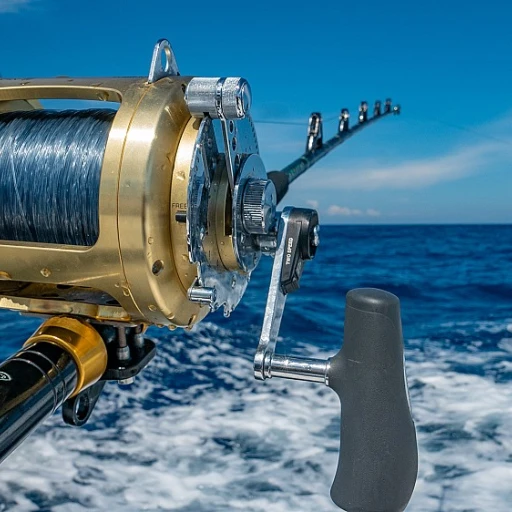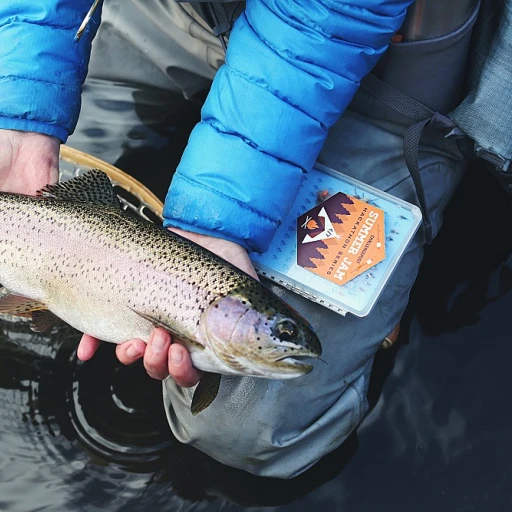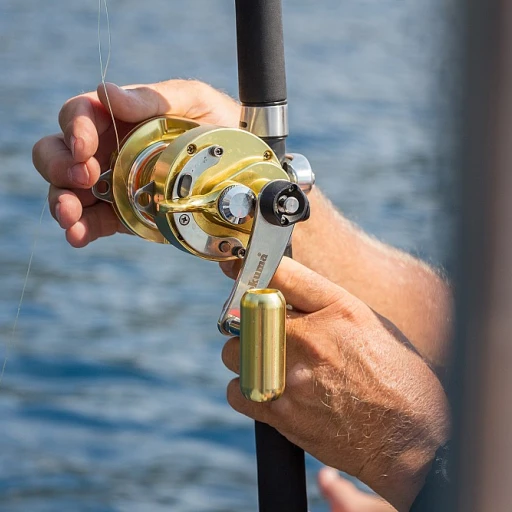
Introduction to catfish: general appearance and characteristics
A deep dive in to catfish appearance
So, what does a catfish look like? If you've ever asked yourself that question, especially when out fishing or simply enjoying a nature documentary, you're not alone. Catfish are one of the most varied and fascinating fish species. They possess some unique and striking characteristics that make them easy to spot, even for the untrained eye.
Generally, catfish are well known for their barbels, which are whisker-like structures located around their mouths. These appendages make them look somewhat similar to a cat, hence the name 'catfish'. They play a crucial role in helping these fish find food in murky waters. Ever wondered why? It's because they don't rely heavily on their vision but instead use these sensitive whiskers to sense their surroundings.
Getting familiar with the general traits
One of the main features of catfish is their scaleless bodies. Unlike many freshwater fish, catfish don't have scales on their skin. Instead, their bodies are covered in smooth, leathery skin which can sometimes have a mucus-like texture. This unique feature can evoke surprise and curiosity among anyone handling a catfish for the first time.
Catfish also have stout spines in their dorsal and pectoral fins. These spines offer them protection from predators. Handle with care, because these spines can inflict painful wounds if they're not approached cautiously.
You'll find catfish in various freshwater environments, from rivers and lakes to ponds and streams. Their adaptability is part of why they're so widespread across North America and beyond. Some common species you'll encounter include the channel catfish (Ictalurus punctatus), blue catfish (Ictalurus furcatus), and flathead catfish (Pylodictis olivaris).
How diversity adds character to catfishes
What's interesting is the wide diversity among catfish species. Each species has unique traits that set them apart. For example, the channel catfish is often noted for its deeply forked tail and scattered blackish spots. On the other hand, the flathead catfish has a notably flat head and a mottled yellow to brown color pattern.
It's not just North America that sees these intriguing fish. Across the globe, species like the glass catfish (Kryptopterus bicirrhis) and the red tail catfish (Phractocephalus hemioliopterus) captivate fish enthusiasts with their unique appearances and behaviors. Their identities provide rich studying material and endless fascination.
Identifying channel catfish (Ictalurus punctatus)
Identifying channel catfish
The channel catfish, Ictalurus punctatus, stands out as one of the most common and widely recognized species. They are particularly popular in North America, cherished by both recreational and commercial fishers. But, what does a channel catfish look like? Let’s dive into the distinct features that can help you identify this catfish.
First off, channel catfish have a slender, streamlined body with a deeply forked tail. Their coloration typically ranges from olive-brown to slate-blue on their back, smoothly transitioning to a silvery white belly. One of the unique identifiers is their scattered black spots on the body, though these can vary or even be absent in larger specimens.
If you're observing the fish closely, you'll notice the anal fin. Channel catfish possess a long, convex anal fin with 24 to 29 rays, which sets it apart from other catfish species. Their whisker-like barbels around the mouth are sensory organs, help them detect food in murky waters. These barbels are often black or dark gray.
Size is another factor; most channel cats you’ll catch range from two to five pounds, but trophy specimens can surpass 20 pounds! According to a report from Fishing Magazine, they are most active during cooler months, making it prime time for angling.
Expert Angela Capolupo, an aquatic biologist, notes, “Channel catfish are incredibly adaptive, thriving in diverse habitats from small ponds to vast reservoirs. Understanding their behaviors and habitats can greatly enhance your fishing success.”
In the United States, channel catfish can be found in states like Texas, Mississippi, and Ohio, particularly in freshwaters like rivers and lakes. These fish are not just limited to natural settings; they’re also a staple in fish farms, thanks to their hardy nature and fast growth.
So, next time you’re out fishing, keep an eye out for those forked tails, barbels, and black spots. You’ll know you’ve got a channel catfish on the line when you spot those telltale signs, especially when you're fishing in well-known spots like the Missouri or Mississippi rivers.
Features of blue catfish (Ictalurus furcatus)
What makes blue catfish unique
Blue catfish (Ictalurus furcatus) are known for their impressive size and distinct features. With their smooth, scaleless skin and bluish-grey color, they stand out among other catfish. These fish can get quite large, often reaching weights over 100 pounds. The largest blue catfish ever caught weighed a staggering 143 pounds, making them a favorite among trophy anglers.
Blue catfish have deeply forked tails, which help them maneuver swiftly in water. Their dorsal and pectoral fins are pronounced, aiding in their navigation through different water bodies. Unlike some catfish species, blue catfish lack a strong scent but have a subtle earthy aroma. Their diet mainly consists of smaller fish, crustaceans, and occasionally plant material, making them opportunistic feeders.
These catfish species are predominantly found in large rivers, reservoirs, and lakes across the Southern United States, especially in places like the Mississippi River. They're also present in Mexico and can be found as far north as Canada. According to a study by the US Geological Survey, blue catfish have been increasingly common in new areas, including the Chesapeake Bay.
Feeding habits and fishing techniques
Blue catfish are particularly active at night, making nighttime fishing a popular method. They are attracted to cut baits, such as herring and shad, but also respond well to live baits like worms and small baitfish. Experienced anglers suggest using heavy tackle due to the blue catfish's potential size and strength. A strong fishing line and a sturdy rod can make all the difference when trying to catch these big fish. You can find more tips on catching big bluegill on our fishing magazine blog.
If you're seeking blue catfish, look for deep holes and channel edges where they tend to hide during the day. Drifting or anchoring near these spots can increase your chances of a successful catch. Blue catfish also have a long lifespan, sometimes living over 20 years, which contributes to their large size.
Expert insights and reports
Dr. Nathan Stone, a renowned ichthyologist from the University of Arkansas, highlights blue catfish as a prime example of adaptability in freshwater systems. “Their ability to thrive in a range of environments from fast-flowing rivers to still reservoirs showcases their robust nature,” says Dr. Stone.
Recent studies have noted an increase in blue catfish populations in non-native areas, potentially impacting local ecosystems. The Marine Science Journal published a report discussing the ecological influence of blue catfish in the Chesapeake Bay, noting their rapid spread and predation pressure on native species.
Blue catfish remain a popular target among anglers for their size and fight, but it's important to follow local regulations and practice sustainable fishing to preserve their populations for future generations. If you're eager for more information on unique fish species, check out our article on golden bass.
Spotting flathead catfish (Pylodictis olivaris)
Physical characteristics of flathead catfish (Pylodictis olivaris)
The flathead catfish, also known as Pylodictis olivaris, is a fascinating freshwater fish commonly found in the United States, especially in rivers and lakes in the Mississippi, Ohio, and Missouri basins. If you're trying to identify this species, you'll want to look for its distinctive flat, broad head, which is quite different from the rounded heads of other catfish species. The color is usually mottled yellowish-brown to olive, helping it blend seamlessly with the riverbed or lake bottom. The flathead catfish often has a compressed body with a white to yellow belly, and like most catfishes, it sports barbels around its mouth, sometimes referred to lovingly as "whiskers." These barbels act as sensory organs, helping the fish locate food in murky waters. Experts like Dr. Tracy Hill from the National Center for Aquatic Research have pointed out that the distinguishing feature of the flathead catfish is its caudal fin, which is rounded rather than forked, unlike the blue or channel catfish.Preferred habitat and size
Flathead catfish prefer deep pools within rivers with slow-moving current and plenty of cover like underwater logs or rock ledges. They are generally nocturnal hunters, feeding on live prey like smaller fish, making them a top predator in their habitat. They can grow to impressive sizes, with some giants reaching over 100 pounds. According to the Texas Parks and Wildlife Department, the current record for a flathead catfish caught in Texas is a whopping 98.5 pounds. Anglers aiming to catch these beasts would do well to use live bait, like perch or sunfish, near submerged structures at night. “The thrill of wrestling a flathead catfish onto the boat is like fighting a mini submarine,” says seasoned angler Joe Bedford from the Southern United States.Fishing techniques
When it comes to catfishing, patience is your best friend. Flatheads are cautious and often examine their prey before striking. Using a sturdy rod and reel designed for heavy freshwater fishing is essential due to their size and strength. A three-way swivel rig with a heavy sinker is a popular choice among seasoned catfish anglers. Also, it's crucial to be familiar with local laws as some areas have specific regulations on the types of bait you can use. For those looking for a challenge, night fishing can be exceptionally rewarding. John Osborn, an expert in freshwater fish behavior, recommends a quiet approach and minimal light to avoid spooking these cautious giants. Also, remember that flathead catfish are more active in the warmer months, so plan your fishing trips accordingly. The excitement of fishing for flathead catfish is unmatched. Their elusive nature and sheer size make them a prized catch for anglers across North America, particularly in catfish-rich waters in the Southern United States. Whether you’re a seasoned angler or a beginner, understanding their habits and appearance will significantly increase your chances of a successful catch. And for those curious about other fascinating catches, be sure to glance over our detailed guide on world-record perch and other remarkable records.Understanding white catfish (Ameiurus catus)
Distinctive traits of white catfish (Ameiurus catus)
If you're trying to figure out what does a catfish look like and you've heard about white catfish, get ready for some unique characteristics. Found mostly in the Atlantic coastal states, white catfish are the smallest of the popular catfish species. They generally have a stockier build compared to their blue and channel cousins.
Dorsal and anal fins: White catfish have a moderately forked tail and a dorsal fin with fewer rays than other catfish species. The anal fin has between 19-23 rays, which is less than the channel catfish.
Coloration: The body color ranges from bluish-gray on top with white or cream-colored bellies. This color pattern is particularly helpful for identifying them in the water.
Head structure: One of the most noticeable features is their broad and somewhat flattened head. This gives them a distinctive look, almost like a mini version of the large flathead catfish. Their whisker-like barbs or barbels are also a key identification marker.
Geographic distribution: Although primarily located along the Atlantic coastline, white catfish can be found in various freshwater systems across the United States. States like Maryland and New York are pretty common ground for these fish.
Behavior and habitat: White catfish prefer slower moving waters and are often found in tidal rivers and estuaries. They are bottom-dwellers and typically feed on small fish, insects, and plant matter. This makes them relatively easy to catch compared to other more elusive catfish like the blue catfish.
The white catfish may not be the biggest or the flashiest, but they hold a special place in the heart of many anglers across North America. If you're planning to fish for these, remember that they are opportunistic feeders. Stick to bait that mimics their natural diet, such as worms and small fish. Next time you're out by the river in Maryland or fishing in the estuaries of Florida, take some time to spot these fascinating fish.
Don't forget to visit this guide to align your fishing trips to the best times of the year.
Exotic catfish species: glass catfish and red tail catfish
Exotic catfish: what makes them stand out?
When it comes to exotic catfish species, things can get pretty fascinating. Let's dive into two remarkable varieties: glass catfish and red tail catfish. These species not only differ from common types like the channel or blue catfish, but they also bring their unique flair to the fish world.
Glass catfish: the phantom fish of the aquarium
The glass catfish (Kryptopterus) is known for its almost transparent body. Stretching up to 4 inches, its appearance is both eerie and intriguing. A key feature of glass catfish is that you can actually see their organs, thanks to their clear, glass-like skin. Originating from Southeast Asia, especially Malaysia, they are freshwater dwellers, usually inhabiting slow-moving rivers and streams. Their ghostly appearance makes them a prized addition to many home aquariums.
Red tail catfish: a gentle giant
Red tail catfish (Phractocephalus hemioliopterus), on the other hand, are native to South America, particularly in the Amazon Basin. This species is easily identifiable by its vivid red caudal fin. They might look like your average catfish, but these bad boys can grow up to 4 feet in length and weigh over 80 pounds. Despite their size, red tail catfish are known for being relatively gentle, although they need a big tank if kept in captivity. They have a unique feeding behavior – they are opportunistic feeders, gobbling up fish, fruits, and even small mammals that fall into the water.
Unique characteristics and habitats
Exotic species like the glass and red tail catfish thrive in specific conditions. Glass catfish prefer water that's clear and slightly acidic. They are also schooling fish, meaning they do best when kept in groups. Meanwhile, red tail catfish require large, well-oxygenated water bodies with plenty of hiding spots. The substrate and decor in their tanks should mimic their natural habitat, which is often filled with fallen branches and rocks.
Common myths and misconceptions
There are some myths about these exotic catfish. One common misconception is that glass catfish are incredibly delicate and hard to keep. While they do have particular needs, proper care and the right environment can help them thrive. On the other hand, red tail catfish are often thought to be aggressive, but in reality, they are usually peaceful if given enough space and suitable tank mates.
Conservation and ethical considerations
It's also vital to consider ethical and conservation issues, especially with exotic catfish. Overfishing and habitat destruction pose threats to these species in the wild. If you're looking to keep them, ensure they are sourced responsibly. It's best to purchase from reputable breeders rather than wild-caught specimens, which helps preserve their natural populations.
Fishing for catfish: tips and techniques
Gear you absolutely need
Fishing for catfish can be oddly addictive, especially when you are well-equipped. Your must-have gear starts with a sturdy rod and reel combination. A medium-heavy to heavy-action rod is ideal for handling the weight and strength of catfish, especially if you're targeting big ones like channel catfish (Ictalurus punctatus) or blue catfish (Ictalurus furcatus).
Bait and lures that work wonders
Catfish aren’t typically picky eaters, but knowing their favorites can increase your chances of a catch. Live baits such as nightcrawlers, minnows, and shad are local winners. Chicken liver and stink baits are famous for enticing channel cats, while cut bait often lands larger blue catfish. Flathead catfish (Pylodictis olivaris) tend to go after live fish such as bluegill or goldfish, given their predatory nature.
Prime fishing spots
Catfish love slack water, particularly in the warmer months. You’ll often find them in deeper holes in rivers and undercut banks. Lakes and ponds might house them near submerged logs or vegetation. River channels are also thriving spots, especially for channel cats. During summer nights, catfish emerge closer to bank waters, making them easier to catch.
When to fish: time matters
Catfish are often more active at dawn, dusk, and throughout the night, capitalizing on low light conditions to hunt. Weather and water temperature affect their feeding habits, so look for recent changes that spur their activity. Learn about the best times to fish by checking out this guide.
Setting the right hook
Setting the hook is crucial when catfish bite. They often nibble before going in for a full take. Circle hooks work well, as they tend to set themselves when the catfish swims away. For other hooks, a firm yet controlled tug should secure your fish. Always remember to keep constant pressure to avoid losing your catch.
Handling your catfish
Once you’ve hooked a catfish, handling it properly is essential. Beware of their sharp dorsal and pectoral fins – a solid pair of fishing gloves can prevent injuries. Use a net for larger fish to avoid lines breaking at the bank or boat. For catch and release, minimize handling and make sure the fish is lively before letting it go.


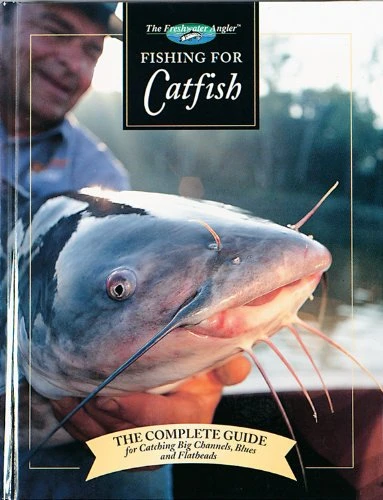





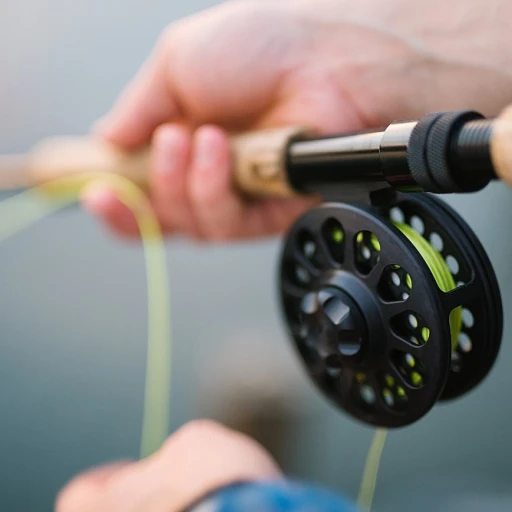

-large-teaser.webp)
